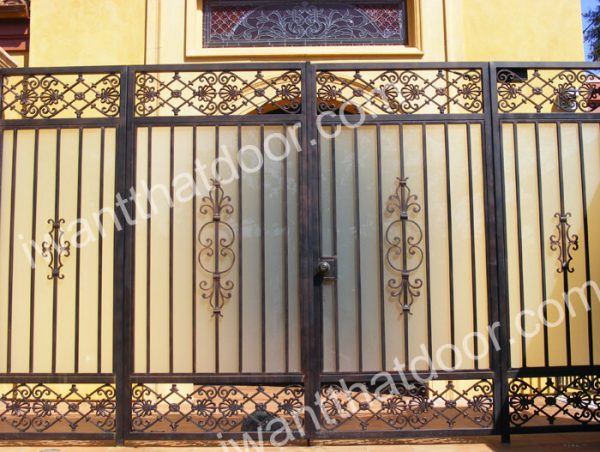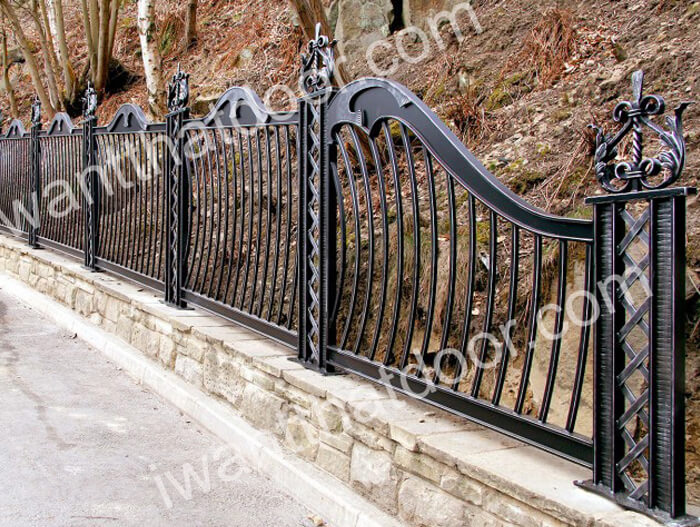Fencing provides an essential way to help enclose the spaces around our homes and businesses. There is a wide array of different building materials you can use for fencing, such as:
- Wood
- Vinyl
- Fiberglass
- Aluminum
- PVC Plastic
- Steel
- Wrought Iron
Of these materials, wrought iron is the best material to use when you want to add a touch of class, elegance, beauty, and charm to your property. Wrought iron fencing provides the ability to customize your fence design with ornamental scrollwork and detailed ironwork or minimalistic features.
Additionally, wrought iron fence designs are not just gorgeous to look at but are very durable and strong. They will last a lifetime with the proper care and maintenance.
When Did Wrought Iron Come into Popularity?
Wrought iron came into popularity in the 15th century. It was during this time that ironsmiths began inventing blast furnaces which allowed them to heat iron to even higher temperatures. Wrought iron is heated to extreme temperatures to remove most of the impurities from it.
As the impurities are removed, it makes it possible to work with the heated iron much easier. As a result, the iron can be shaped, bent, and twisted into all sorts of unique and original designs. As the iron cools, it solidifies and becomes very strong and durable.
It is easy to find ancient wrought iron fencing still in many places today, as it was centuries ago, such as churches, cathedrals, and castles. Throughout the history of wrought iron, there have been three distinct periods that helped influence wrought iron fence designs, as follows:
Georgian Period
This period in British history was from 1714 to around 1837. Its style features decorative and ornate elements and details that utilize classic proportions and symmetry, focusing on a harmonious and uniform design. You can still find Georgian period wrought iron fencing in older neighborhoods in England.
Victorian Period
The Victorian period refers to the time Queen Victoria was on the throne and runs from 1837 to 1901. You can still find Victorian period wrought iron fence designs in older London neighborhoods. The fencing features an ornate and detailed ironwork, often accompanied by rosettes, twisted fence bars, and geometrical fence post caps.
Edwardian Period
When King Edward VII took the throne in 1901, it marked the beginning of the Edwardian period, which lasted until 1910. However, its influences continued in many places in England until the start of World War I in 1914.
Wrought iron fence designs were influenced by a Baroque revivalism that drew on many classical and natural elements. Some of the fencing during this period used ornate fence post caps and decorative infill panels.
Wrought Iron Fencing in the New World
Ironsmiths that immigrated to the United States brought their knowledge and skills with them. As they started to settle in different places, it led to a boom in iron smelting and production in the 18th century.
While all sorts of wrought iron products were produced, decorative and elegant wrought iron fencing first became noticeable in many areas in the French Quarter in New Orleans. It was not long before wrought iron fencing grew in popularity throughout the south.
You can see influences of the different English periods and French-inspired designs still today in the French Quarter and many older neighborhoods in the south.
Wrought Iron Fencing for Your Home

When you want to add a touch of elegance to your property while improving your home’s safety and security and boosting its curb appeal, you cannot go wrong with modern wrought iron fencing. Today’s designs range from classical English to modern minimalism and everything in between.
Discover the different wrought iron fence designs available from Universal Iron Doors by browsing our online store. Can’t find a design you like? Give us a call at 818-771-1003 to discuss customization options or to request a free estimate today!

